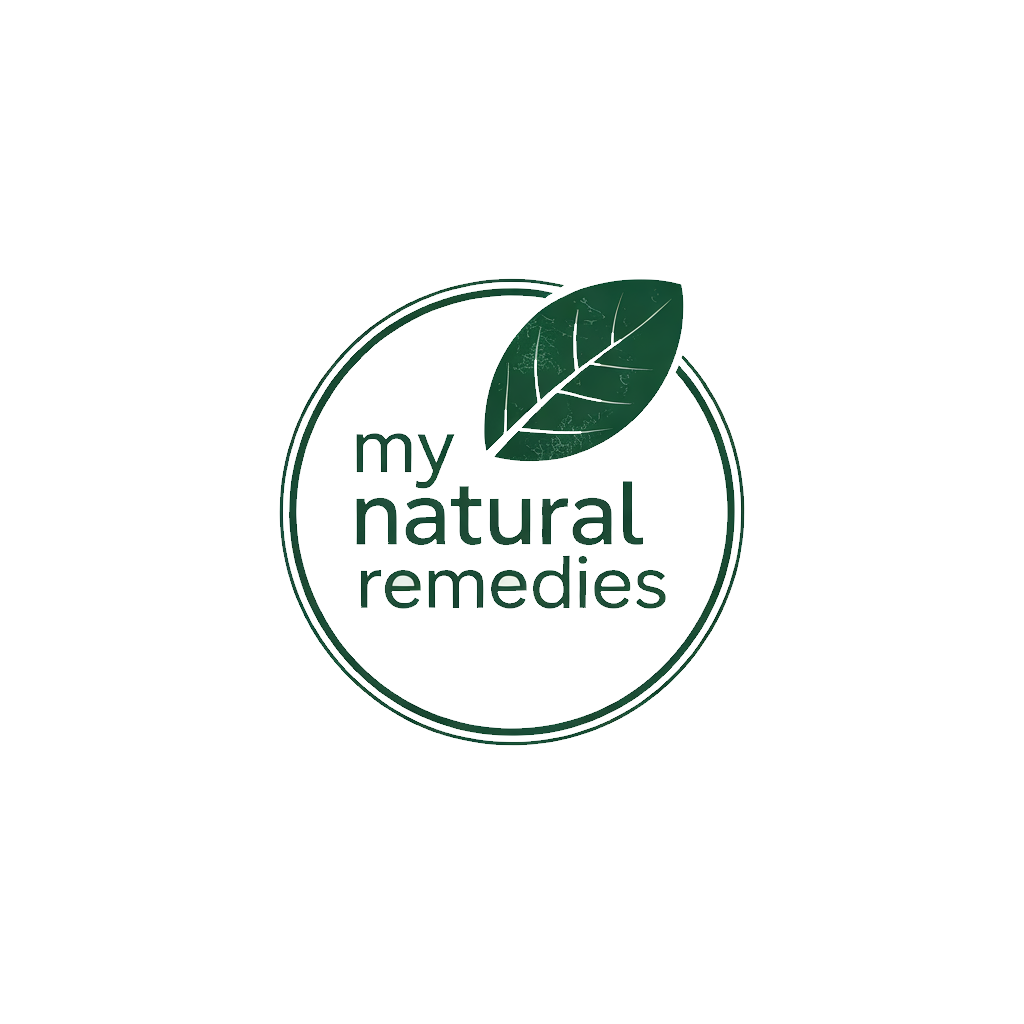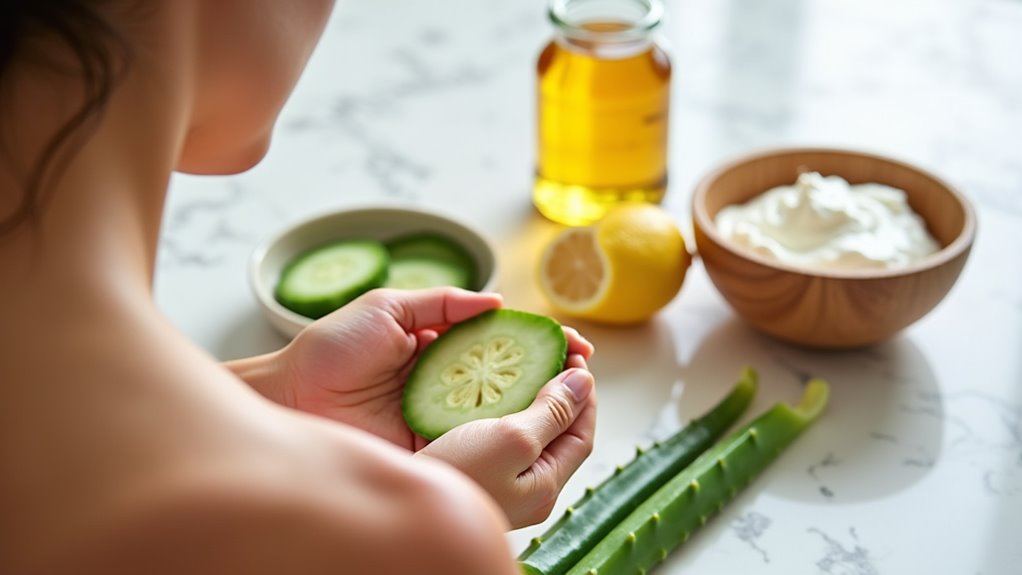10 Allergy Relief Solutions You Can Make at Home!
You can tackle pesky allergies right at home with these 10 easy solutions! Start with a saline nasal rinse to clear out pollen. Try a honey and lemon drink to soothe your throat and support your immune system. An apple cider vinegar tonic can help with sinus congestion, while herbal teas combine various benefits to keep you comfy. Don’t forget a relaxing oatmeal bath to calm irritated skin! Essential oil diffusion creates a pleasant atmosphere, and a homemade air purifier can improve your air quality. Want to explore more fun and handy remedies? Stick around to discover even more ways to feel better!
Saline Nasal Rinse
A saline nasal rinse can be an effective way to alleviate allergy symptoms. If you’re tired of sneezing and sniffing, this simple method might just be your new best friend. The nasal rinse benefits are plenty—it helps clear out pollen, dust, and other irritants from your nose, leaving you feeling fresher and more comfortable. Plus, it’s easy to do!
To prepare your saline solution, mix about a teaspoon of salt in two cups of warm, distilled water. You can also add a pinch of baking soda for extra comfort. Make sure it’s well mixed before you get started. Then, using a bulb syringe or a neti pot, lean over the sink and gently pour the solution into one nostril while letting it flow out the other. It might feel a bit funny at first, but stick with it!
You’ll notice a difference after just a few rinses. This simple routine can become a part of your allergy relief toolkit, allowing you to breathe easier. Plus, it’s a great way to feel like you’re taking control of your allergies, and who doesn’t want that?
Honey and Lemon Drink
Feeling under the weather from allergies? You’re not alone, and there’s a simple remedy waiting in your kitchen! A warm honey and lemon drink can work wonders. Both honey and lemon are packed with goodness, and they taste great together!
Here’s a quick look at why this drink is so beneficial:
| Ingredient | Benefits | Properties |
|---|---|---|
| Honey | Soothes your throat and reduces cough | Antimicrobial and anti-inflammatory |
| Lemon | Boosts your immune system | Rich in vitamin C and antioxidants |
| Combined | Enhances overall wellness | Natural hydration and relief |
To make this drink, just mix a tablespoon of honey and the juice of half a lemon in warm water. Sip it slowly, and you’ll feel the soothing effects almost immediately! The honey benefits your throat, while the lemon properties help clear your sinuses. Plus, it’s a cozy drink that feels like a warm hug. You deserve that kind of comfort! So, grab your honey and lemon, and let’s kick those allergy blues together!
Apple Cider Vinegar Tonic
Apple cider vinegar tonic is a powerful ally in your battle against allergies. It’s not just a tasty drink; it’s packed with vinegar benefits that can help your body fight off those pesky allergens. Imagine sipping on a refreshing tonic that supports your immune system and helps clear your sinuses. Sounds great, right? Here’s how to make your own apple cider vinegar tonic at home:
- Mix 1-2 tablespoons of apple cider vinegar with 8 ounces of water.
- Add a teaspoon of honey for sweetness and extra immune support.
- Sprinkle in a pinch of cayenne pepper for a spicy kick that opens up your airways.
- Stir well and enjoy once or twice a day!
This simple tonic can help reduce congestion and promote overall wellness. Plus, it’s a fun way to feel like you’re part of a health-savvy community! So, grab your apple cider vinegar and join the ranks of those who are taking charge of their allergies. You’ll be amazed at how something so simple can make such a difference. Cheers to your health!
Herbal Tea Blends
Herbal tea blends offer a soothing refuge from allergy symptoms, combining the healing properties of various herbs to help alleviate discomfort. When you prepare your tea, think of it as a cozy hug for your insides. Let’s look at some popular herbal properties that can lend a hand:
| Herb | Benefits |
|---|---|
| Peppermint | Eases congestion and headaches |
| Chamomile | Reduces inflammation and stress |
| Nettle | Acts as a natural antihistamine |
| Ginger | Soothes throat irritation |
To make your tea, simply steep your chosen herbs in hot water for about 5-10 minutes. You can mix and match herbs based on what you like or what you need. Add honey or lemon for a touch of sweetness and extra flavor.
Once you’ve got your blend brewing, sit back and relax. Enjoying a warm cup of herbal tea not only helps with allergy symptoms but also feels like a little moment of peace in your busy day. So grab your favorite mug, and let the healing begin!
Essential Oil Diffusion
Essential oil diffusion can be a fun and easy way to help ease your allergy symptoms at home. You might be surprised by how certain essential oils, like eucalyptus and lavender, can make a difference in your comfort level. Let’s talk about which oils work best and some cool techniques to get those scents wafting through your space!
Recommended Essential Oils
Are you wondering which essential oils can help alleviate allergy symptoms? You’re not alone! Many people turn to essential oils for their aromatherapy benefits. They can provide a soothing atmosphere while helping to ease those pesky allergy issues. Here are some recommended essential oils you might want to try:
- Lavender: This calming oil can reduce stress and help with sleep, making it easier for you to cope with allergies.
- Eucalyptus: Known for its fresh scent, eucalyptus can clear up nasal passages and promote easier breathing.
- Peppermint: This invigorating oil can help relieve headaches and sinus pressure, making it a great addition to your essential oil blends.
- Tea Tree: With its natural antibacterial properties, tea tree oil can help combat allergy-related skin irritations.
You can mix these oils in a diffuser to enjoy their combined effects. Just a few drops can make a world of difference in your home! So, why not create a cozy, allergy-friendly space? You’ll breathe easier and feel more relaxed, all while enjoying the benefits of nature’s finest scents. Happy diffusing!
Diffusion Techniques Explained
When it comes to enjoying the benefits of essential oils, understanding diffusion techniques is key. You want to create a cozy atmosphere while reaping the rewards of these magical oils, right? There are several diffusion methods you can try at home, each with its own charm.
One popular method is using a diffuser, which disperses essential oils into the air. Just add water and a few drops of your favorite oil, and voilà! You’ll fill your space with lovely scents. If you don’t have a diffuser, consider the bowl method. Simply mix water and oils in a bowl and place it near a heat source. The warmth helps release the fragrance.
Peppermint Steam Inhalation
Peppermint steam inhalation offers a refreshing way to ease allergy symptoms, providing both relief and comfort. This simple method combines the peppermint benefits with steam therapy, making it a delightful experience. You’ll feel the soothing effects almost instantly, helping you breathe easier.
Here’s how to get started:
- Boil Water: Heat about 4 cups of water in a pot until it’s steaming.
- Add Peppermint: Once it’s steaming, remove the pot from the heat and add a few drops of peppermint essential oil or a handful of fresh peppermint leaves.
- Create a Tent: Lean over the pot, draping a towel over your head to trap the steam. Just be careful not to get too close—it’s hot!
- Inhale Deeply: Take slow, deep breaths for about 10 minutes. Enjoy the fresh scent and let the steam work its magic.
You’ll not only clear your sinuses but also find a bit of relaxation in the process. Sharing this method with friends or family can make it even more enjoyable. So, grab that peppermint and steam away your allergies together!
Turmeric and Ginger Paste
After enjoying the refreshing effects of peppermint steam inhalation, you might want to explore another natural remedy for allergy relief: turmeric and ginger paste. This duo isn’t just for tasty dishes; it’s packed with amazing benefits! Turmeric benefits your body with its powerful anti-inflammatory properties, helping to reduce swelling and irritation from allergies. Plus, ginger properties can soothe your upset stomach and help clear your sinuses.
Making this paste is super simple. Just grab some fresh turmeric and ginger, peel them, and then grate or blend them together. Mix in a little water to form a paste. You can even add honey for a touch of sweetness and extra soothing benefits! Apply the paste to your chest or throat, and let it work its magic.
You’ll feel like you’re wrapped in a cozy blanket of wellness. It’s a great way to connect with nature’s remedies, and you’ll be part of a community that values natural solutions. So, why not give it a try? Your body will thank you, and you might just impress your friends with your homemade health hack!
Eucalyptus Oil Compress
An eucalyptus oil compress can be a game-changer for allergy relief. When you’re feeling stuffed up or your sinuses are acting up, this simple remedy can help you breathe easier. The eucalyptus benefits include its ability to reduce inflammation and open your airways, making it a fantastic choice for a compress application.
Here’s how to make your own eucalyptus oil compress:
- Gather your materials: You’ll need a clean cloth, a bowl of hot water, and a few drops of eucalyptus oil.
- Mix it up: Add a few drops of eucalyptus oil to the hot water. The steam will help release the oil’s soothing properties.
- Soak the cloth: Dip the cloth into the water, then wring it out so it’s damp but not dripping.
- Apply it: Place the warm cloth over your nose and mouth, or on your forehead. Take deep breaths and feel the relief!
This easy compress can turn your allergy day from “ugh” to “ahh.” So, gather your supplies and make this little wonder. You and your sinuses deserve it!
Oatmeal Bath Soak
If you’re looking for a soothing way to ease your allergy symptoms, an oatmeal bath soak might just be your new best friend! This relaxing soak not only helps calm irritated skin but also offers a bunch of other benefits. Let’s chat about how to prepare your bath and some tips to get the most relief from this cozy treatment!
Benefits of Oatmeal Soak
Oatmeal baths are a soothing remedy for anyone dealing with skin irritation or allergies. If you’ve ever felt itchy or uncomfortable, you’ll love what oatmeal can do for you! The oatmeal benefits your skin in amazing ways. Here are four key perks of an oatmeal soak:
- Skin Soothing: Oatmeal’s natural properties help calm irritated skin. It’s like a gentle hug for your body.
- Moisturizing: Oatmeal locks in moisture, keeping your skin soft and hydrated. Say goodbye to dryness!
- Anti-Inflammatory: It helps reduce redness and inflammation, making it a great choice for those flare-ups.
- Relief from Itchiness: Oatmeal can ease the urge to scratch, letting you relax instead of fidgeting.
Preparing the Bath Soak
Creating an oatmeal bath soak is simple and can be done in just a few steps. First, gather your soothing ingredients. You’ll need one cup of finely ground oatmeal, which you can easily make by blending regular oats in a food processor until they’re powdery. Next, gather a muslin bag or an old sock—yes, really! This will help keep the oatmeal contained while you soak.
Now, fill your muslin bag with the oatmeal and tie it securely. As you fill your tub with warm water, toss the bag in. This will create a relaxing atmosphere as the oatmeal infuses the water with its skin-loving goodness. You can even add a few drops of lavender oil for extra relaxation!
Once your bath is ready, step in and let the soothing ingredients work their magic. As you soak, take deep breaths and enjoy the gentle feel of the water. This is your time to unwind, so let go of any stress. You deserve this moment! Enjoy your oatmeal bath, and remember, you’re part of a community that values self-care and wellness.
Tips for Maximum Relief
To maximize the soothing benefits of your oatmeal bath soak, consider a few key tips. You want to turn your bath into a cozy oasis that helps with symptom management and keeps those allergy triggers at bay. Here’s how you can do it:
-
Use warm, not hot, water****: Hot water might feel nice, but it can dry out your skin. Warm water is perfect for relaxation and relief.
-
Stay in for 15-20 minutes****: This gives the oatmeal enough time to work its magic. You’re not on a clock here, so take your time!
-
Add essential oils: A few drops of lavender or chamomile can enhance relaxation. Just be sure they’re hypoallergenic to avoid more triggers.
-
Moisturize afterward: After your soak, pat your skin dry and apply a gentle moisturizer. This helps lock in hydration and keeps your skin feeling soft.
Homemade Air Purifier
When allergens fill the air, a homemade air purifier can be an effective and budget-friendly solution. You don’t need fancy gadgets to improve your air quality! With just a few simple materials, you can create a DIY air purifier that helps reduce allergens in your home.
Here’s a straightforward table to inspire your DIY project:
| Material | Purpose |
|---|---|
| Box Fan | Circulates air |
| HEPA Filter | Traps small particles |
| Activated Charcoal | Reduces odors |
| Essential Oils | Adds a pleasant scent |
| Air Freshener | Keeps the space smelling fresh |
To make your own air purifier, attach a HEPA filter to the back of a box fan. This combo will help catch dust, pollen, and more. You can also add activated charcoal to absorb odors—like that leftover pizza smell! If you’re feeling fancy, toss in some essential oils for a refreshing aroma.
Creating your DIY air purifier isn’t just easy; it’s a fun project that’ll help you breathe easier and feel more at home. So, roll up your sleeves and let’s clear the air together!
Frequently Asked Questions
Can Children Use These Home Remedies Safely?
Absolutely, you can ensure children’s safety by using natural ingredients in home remedies. Always check for potential allergies first, and consult with a healthcare professional to confirm the remedies are suitable for your little ones.
How Often Can I Apply These Remedies?
You should follow frequency guidelines for each remedy, typically applying them two to three times daily. For best results, keep application tips in mind, ensuring you’re consistent and attentive to how your body responds.
Are There Any Side Effects to These Solutions?
Yes, there can be potential risks and individual sensitivities with these solutions. It’s essential to test them first, observe how your body reacts, and consult a healthcare professional if you experience any adverse effects.
Can I Combine Multiple Remedies for Better Relief?
Yes, you can combine multiple remedies for better relief. Experiment with different remedy combinations to discover effective mixtures that work for you, enhancing your comfort and connecting you with others seeking the same relief.
How Long Will It Take to See Results?
You’ll notice results within a few days, but the results timeline can vary based on individual variation. Stay patient and consistent; your body needs time to respond and find what works best for you.






